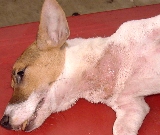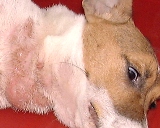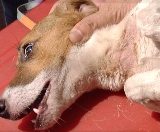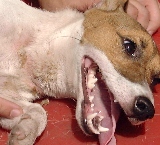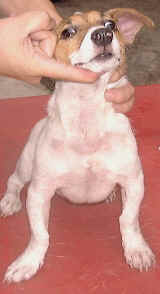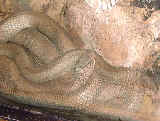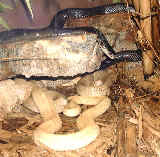| 0623Singapore pet
health and welfare educational for animal lovers, Jack Russell versus the spitting cobra,
excerpts from The
Glamorous Vets, Singapore, sponsored by AsiaHomes Internet. The Jack Russell versus the spitting cobra 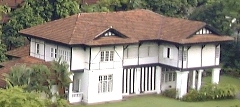 There
were plenty of spaces to run around in this black and white bungalow built during the
British colonial days, next to the Pierce Reservoir. Lots of spaces inside the house and
lots more outside, for a one-year-old Jack Russell whose energy levels exceed most dogs
and many young men. Up and down the wooden staircases, squeaking the wooden floor boards
awaking the military ghosts of the British Brigadier Generals who used to stay in this
black and white bungalow in Singapore founded by Sir Stamford Raffles in 1819. There
were plenty of spaces to run around in this black and white bungalow built during the
British colonial days, next to the Pierce Reservoir. Lots of spaces inside the house and
lots more outside, for a one-year-old Jack Russell whose energy levels exceed most dogs
and many young men. Up and down the wooden staircases, squeaking the wooden floor boards
awaking the military ghosts of the British Brigadier Generals who used to stay in this
black and white bungalow in Singapore founded by Sir Stamford Raffles in 1819. The Jack Russell was Charles' best friend. Charles was a 13-year old city boy who was frightened of dogs as he thought that all dogs bite people. He had never been in contact with real animals and was apprehensive when his grand parents gave him a Jack Russell puppy as a birthday present. His mother was busy most of the time and he had no father. He had lots of free time, playing computer games till he was tired. Watching television till past midnight. He had much freedom and it was a wonder that he was not into drugs or into teenage gang fights over staring incidents at Singapore's numerous shopping malls. Going for walks into the Pierce Reservoir with the Jack Russell took his mind off the loneliness in the quiet house. He would just cook noodles for dinner as nobody would be at home most of the evenings. He could be called a latch-key kid. Both Charles and his dog just loved the tall trees and the tropical forest just when the sun set as a brilliant orange ball into the reservoir waters. The Jack Russell loved chasing the squirrels, the iguanas, the chameleon lizards which seem to be the only small animals ever seen in the reservoir. 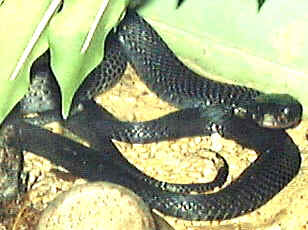 "There're still spitting cobras in the secondary
forest in Singapore, not only at the Singapore Zoological Gardens, " Charles was
warned by his veterinarian. Cobras don't attack unless provoked, he had read in
reference books in the Woodlands library, the biggest 3-storey cascading waterfall library
over black granite cliffs in Singapore. Spitting cobras will spit venom into
people's eyes but they are active at night hunting rodents mainly. "There're still spitting cobras in the secondary
forest in Singapore, not only at the Singapore Zoological Gardens, " Charles was
warned by his veterinarian. Cobras don't attack unless provoked, he had read in
reference books in the Woodlands library, the biggest 3-storey cascading waterfall library
over black granite cliffs in Singapore. Spitting cobras will spit venom into
people's eyes but they are active at night hunting rodents mainly.For the past months, he had not seen any. Maybe one or two green snakes which he caught and put them into jars. He carried a big branch just in case he encountered dangerous snakes. Now he was searching for the black fighting spiders which usually hide in webs between the leaves. His classmates would challenge their spiders against his. The bigger the spiders the better chances of winning. The joggers panted past him. It was getting dark at 6,30 p.m and it was not so bright in this forest. Should he be going home? Little squirrels were running up the Casuarina trees. His Jack Russell barked excitedly at something in the tall lallang grass. Danger beckoned but the independent thirteen-year-old city boy has no real ear of death. There was a hissing sound. A thin and long snake suddenly reared up to one metre high hissing at his dog and now it was eyeing him. All three metres long black shiny scaled reptile. It expanded the scales from behind its eyes making its head look like it was wearing a hood. The Jack Russell must have encroached on her nest. Charles froze, not knowing what to do as this was the cobra. He would be paying the price for curiosity. This was not the the type of cobra swaying to the movement of music instrument of the Indian snake charmer in Little India. The snake books did not mention what to do when one encountered one of the most venomous snakes in the tropics. If the snake bit him, he would die. The neurotoxin from the venom would go to his nerves and paralyze his heart and lungs. His heart would stop beating and he would not be able to breathe. It would be a very painful death. Spitting cobras will spit their venom into his eyes and blind him. He wanted to run away but he just could not move. His legs were solidly planted like boulders on the ground. It was one of those nightmares when you wanted to run away from danger but just could not move. The Jack Russell jumped towards the snake instinctively. It sensed the fear emanating from Charles' body. That movement distracted the cobra and gave Charles the opportunity to stumble and back away as his paralysed legs recovered from the fear of death. There was a scuffle as the Jack Russell went for the neck of the cobra from the side. The tall lallang grass parted. The smell of wet soil pervaded the fighting zone. Surely, this would be the end of this small dog. The cobra retreated into the tall lallang grass as Charles shouted for his pet dog to go back to him. It was risky to go after the snake. There must have been a small bite as the Jack Russell's neck started to swell over the next few days. None of the paralysis, heart or respiratory failure associated with cobra bites. No necrotising wounds in the skin. The neck just became irritating. Therefore, there was no need to see the veterinarian or get an anti-venom injection.
Reference: The
Atlas of Snakes of the World - John Coborn. Woodlands National Library, Reference Section,
has beautiful pictures of the cobras. |
